Advice
How to choose your riding reins?
11 April 2023
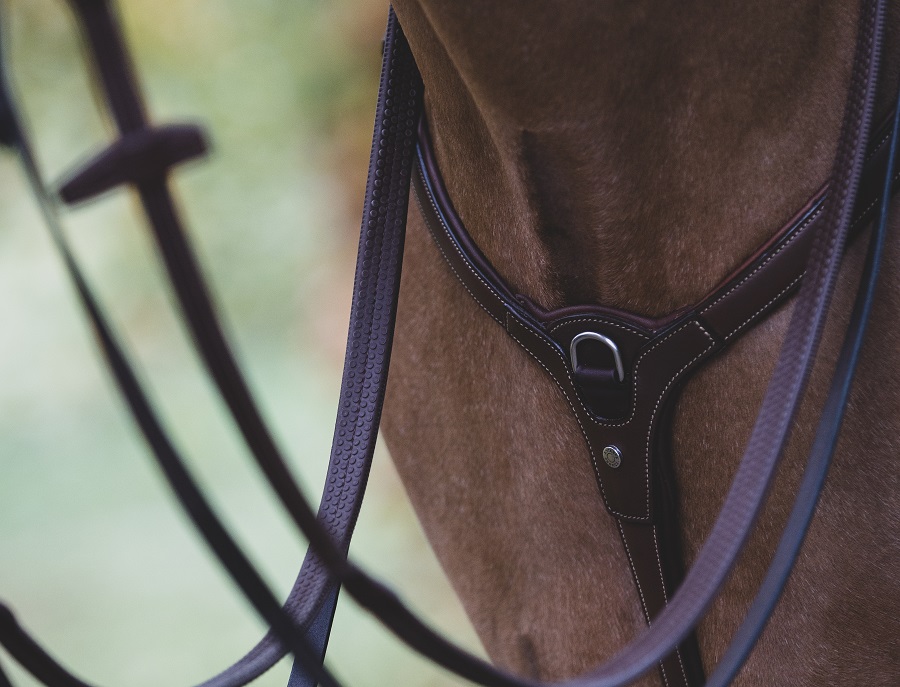
Advice
11 April 2023

As an add-on to the bridle, reins have a key role to play. The choice is crucial and often highly personal, one a rider makes on feeling. Among the many selection criteria is what they are made. This affects the contact with the horse but also the riding discipline.
Reins are the direct link between the horse’s mouth and the rider’s hands. They are a genuine communication channel that shouldn’t be overlooked.
Worn or damaged reins can also jeopardise your safety. That’s why it’s important to check what state they’re in and take regular care of them.
So, we’re asking some key questions to help you make the right choice such as,
What materials should you choose for your reins? Which type is best suited to each riding discipline? How do you look after them? This article gives you an overall assessment.
A dressage rider seeks finesse and discretion when channelling information to their horse. The rider’s orders should be as inconspicuous as possible to the naked eye yet easily understood by the horse. For that reason we recommend leather reins, or hunter-type reins. The advantage of these slender reins is their good grip in the rider’s hand. Both soft and pliable, these refined reins also make it easier to ride double reins which is common to dressage.
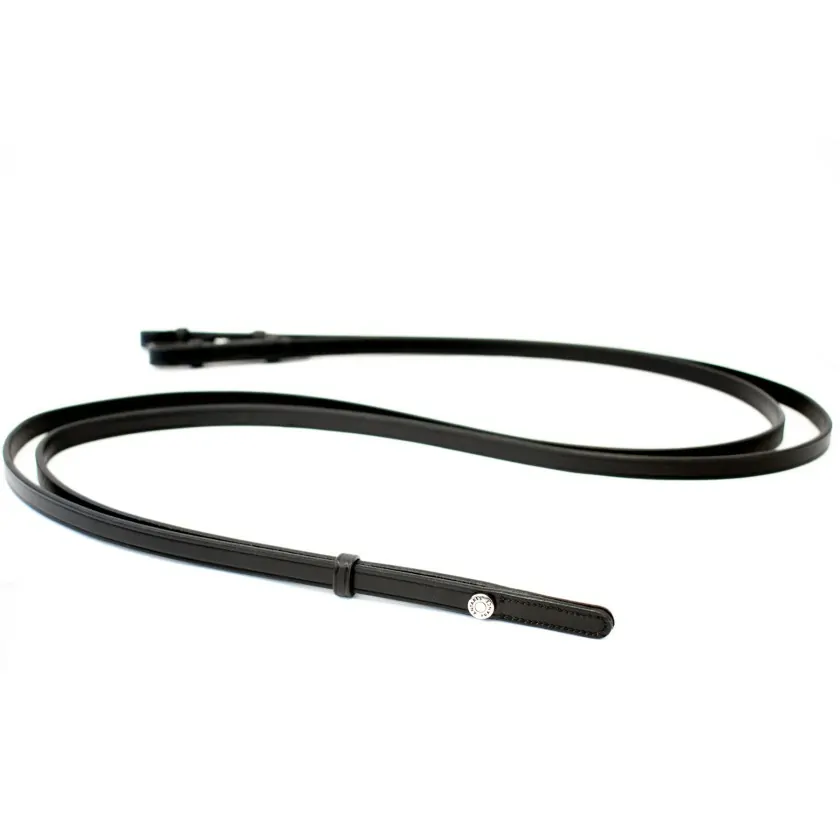
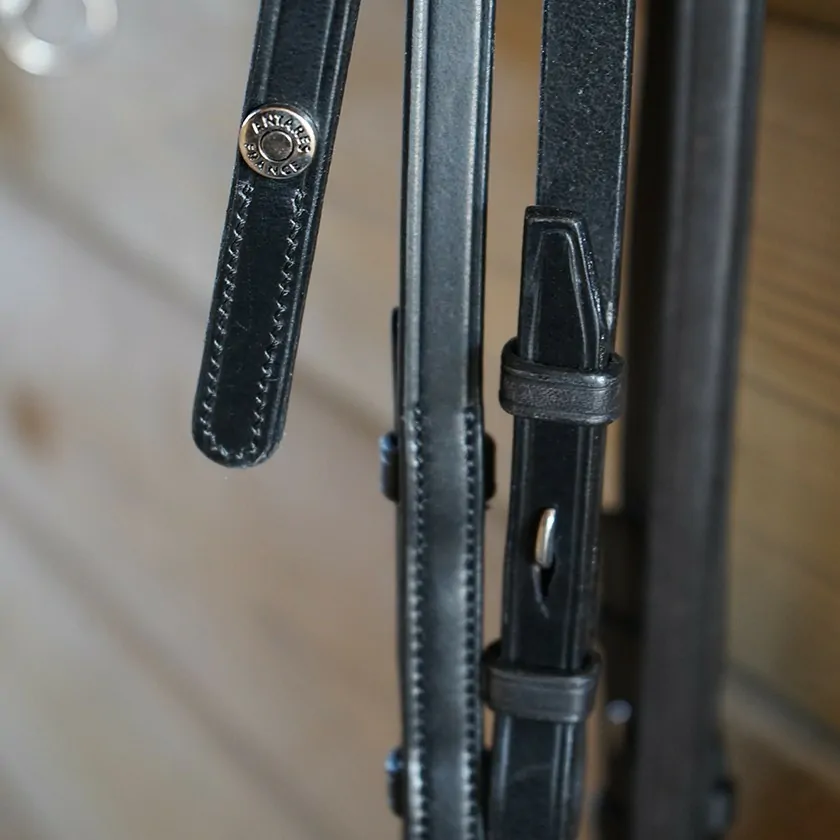
Hunter trials require certain standards in style and tack. Restrained, classic elegance are what you need!
Hunter reins were first made of thin leather but were tricky to handle with riders often losing their grip when jumping, while sweat from the horse made the problem worse.
Now, the rules allow the use of other types of reins. The outer side should always conform to hunter class riding principles but the inner can be lined using a technical material for improved grip.

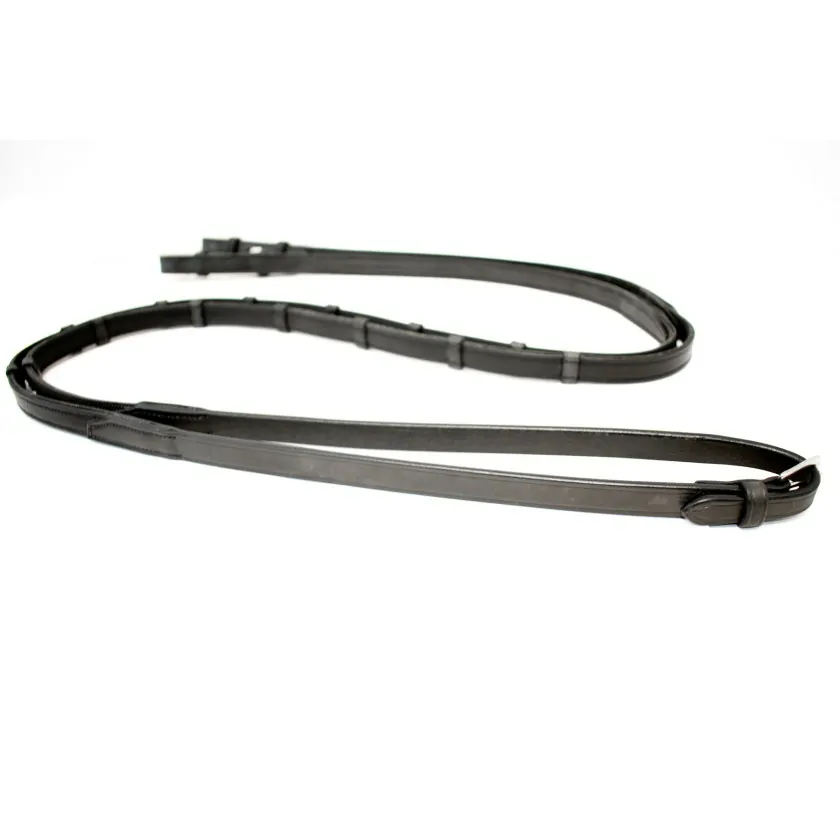
Braided reins also meet hunter class riding requirements. The leather keeps them looking smart while the braiding gives great grip and a comfortable hold.
You need a good grip on the reins for show jumping, cross-country or riding in the countryside. Water from crossing fords or showers can make your reins slippery so we recommend non-slip reins.
Our rubber or web reins come with stoppers to help novice riders position their hands at an equal distance while providing a reference point when on training rides. Both pairs of reins are more suited to show jumping or rides in the countryside.
Our elastic reins are also a good match for many riders. They protect the horse’s mouth from any poorly conducted hand actions. The elastic cords also give greater comfort and stability in the contact between the horse’s mouth and the rider’s hand whatever the latter’s level. They have a corrective action, especially when jumping.
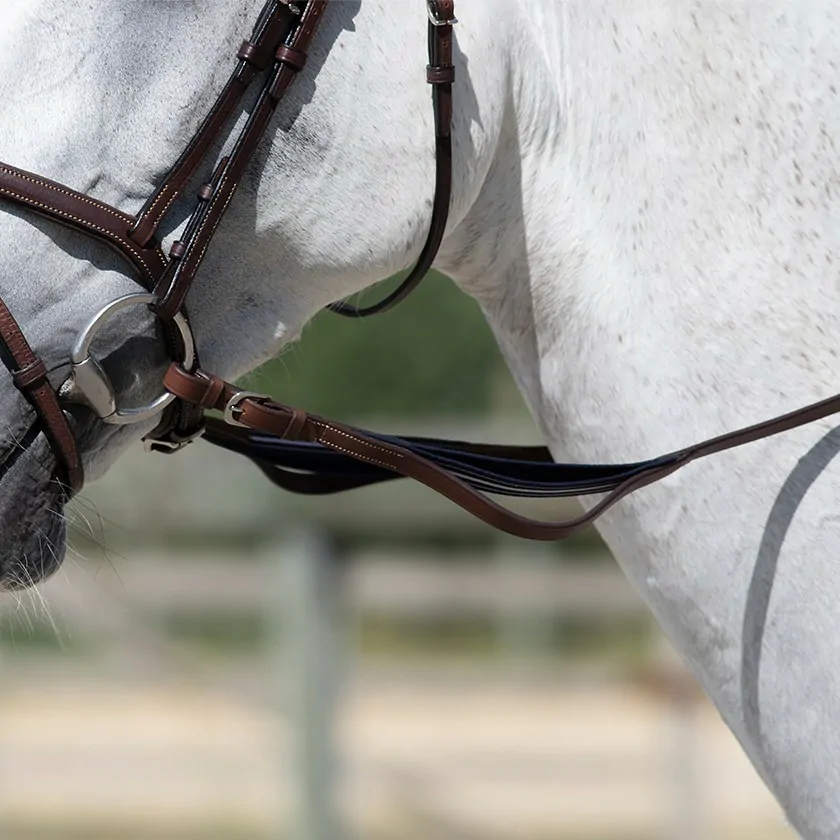
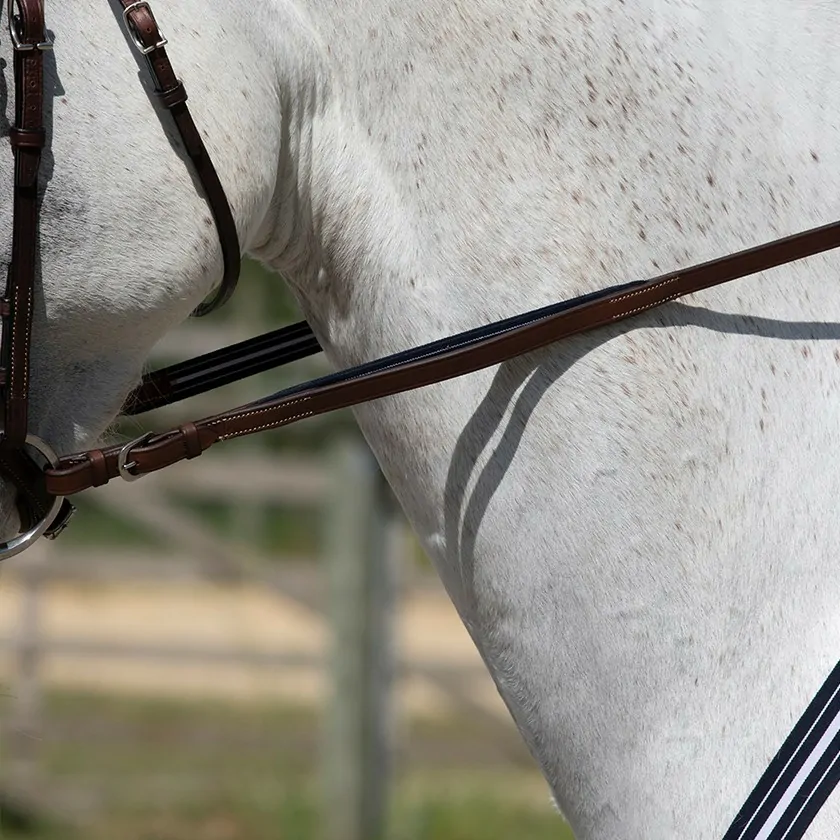
Leather is a supple material that offers great accuracy in the rider’s demands. Most dressage riders use leather reins which are mostly thinner and more comfortable to hold for riders using bridles.
If you are worried about your reins slipping, we suggest you choose braided leather reins. The braiding provides good grip without making them too thick, plus they are just as firm and rigid as rubber ones.
Rubber is more supple than leather and gives a better grip. The rubber reins are pimple-lined for good non-slip grip when out training with your horse, especially in wet weather. They are thicker than leather or web reins but they still give a firm hold in the rider’s hand. It all comes down to personal preferences, especially in terms of comfort. Thick reins can also feel more reassuring.
Cotton webbing is strong and durable. The most striking feature of web reins is that they are very flexible. They have stoppers to reduce the risk of slipping and provide riders with properly adjusted reins.
The size of the reins mostly depends on the size of your horse and its neck but there are several other things to consider:
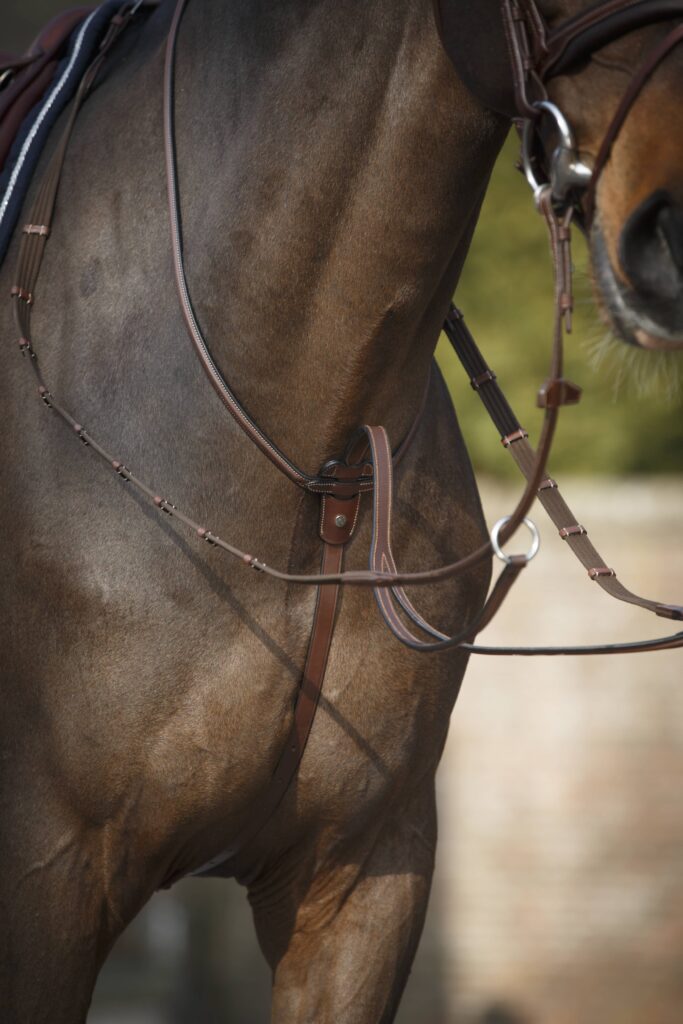
Even if your reins are not entirely made of leather, it’s best to look after them to ensure they are long-lasting. Rubber or web reins are soft, flexible materials that are easy to care for. Just clean them with a damp cloth.
[See all our tips for looking after your leather tack.]
We recommend you clean the leather in your reins after each use to keep them strong and supple. Apply the soap with a damp sponge.
Moisturise your clean riding reins once or twice a month with leather conditioner using a clean cloth or a sponge.
When your reins get too stiff, soften them up once or twice a year with our leather oil. Apply a thin layer of oil with a brush.